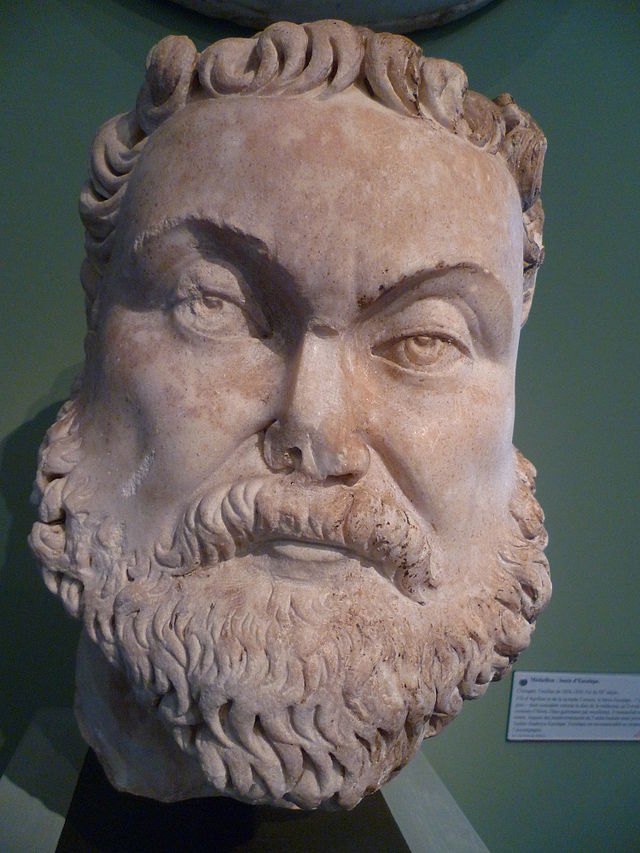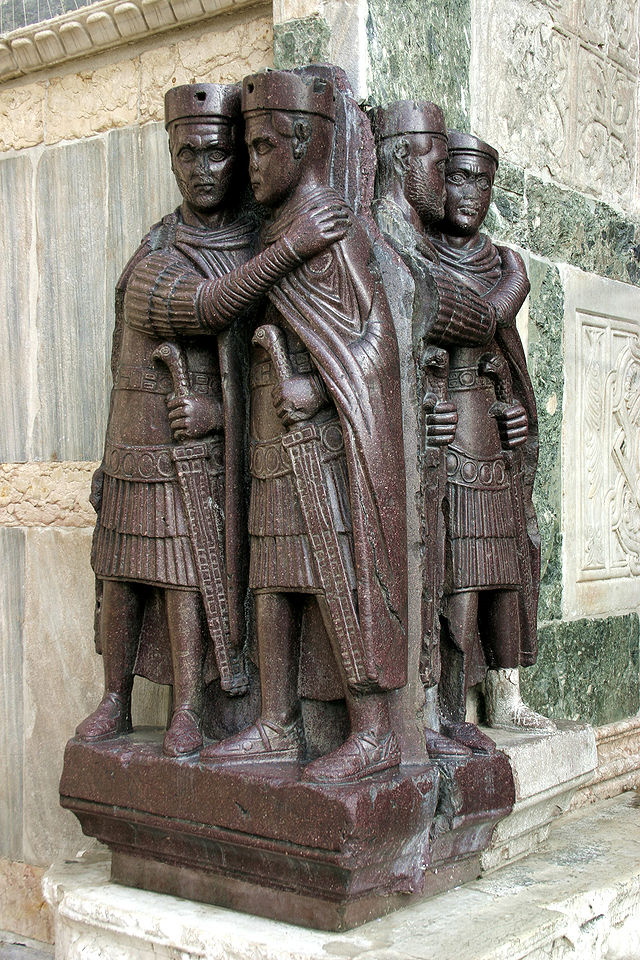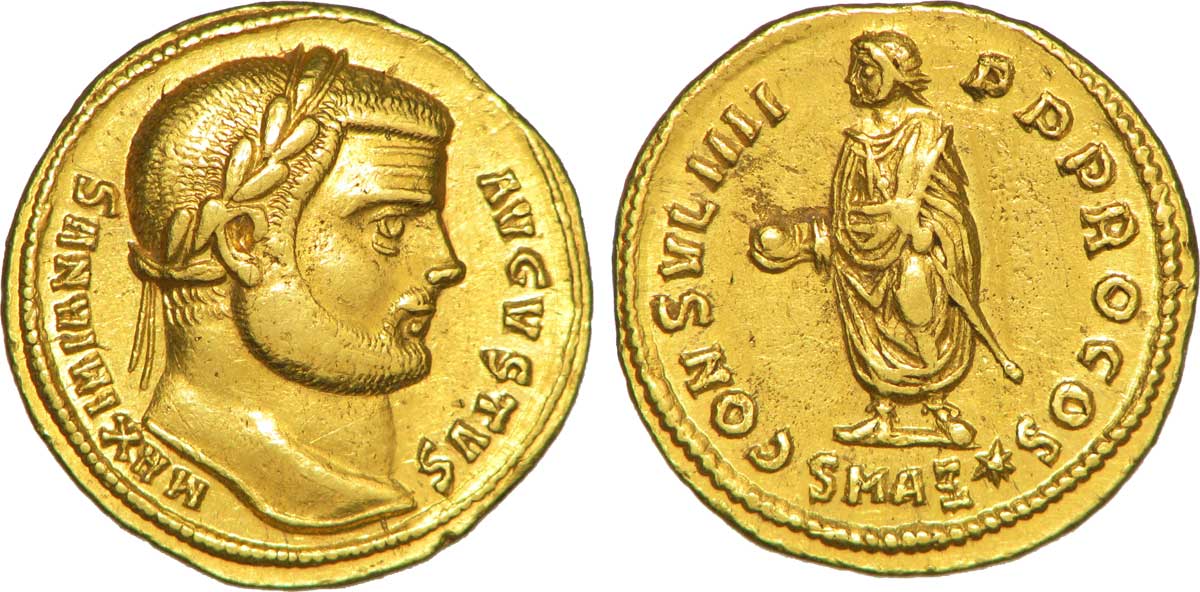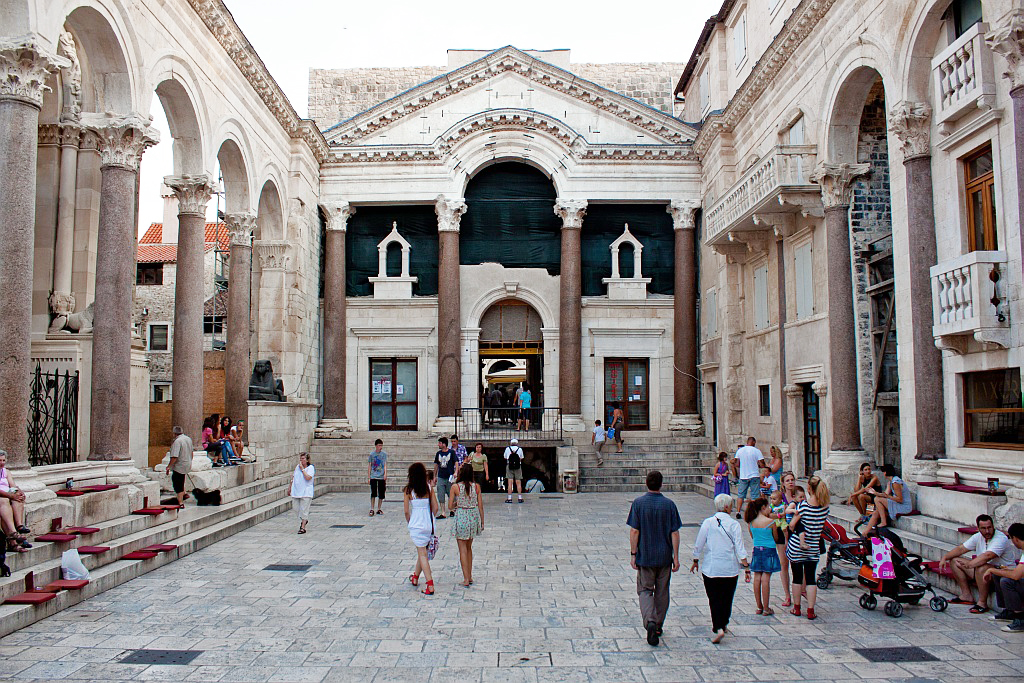By Anne Leader
On 1 May 305, co-Emperors Diocletian and Maximian retired from office. Diocletian had ruled the Roman Empire since 284, sharing power with Maximian after 286. Maximian is often seen as the military muscle behind Diocletian’s political intelligence. By the end of the third century, the empire had grown so large that Diocletian established a tetrarchy, or rule by four, with two senior Emperors, known as Augusti, and two junior sub-Emperors, known as Caesars. The empire was divided into four sectors with capitals at Nicomedia (Izmit, Turkey) ruled by Augustus Diocletian; Sirmium (Sremska Mitrovica, Serbia), by Caesar Galerius; Mediolanum (Milan, Italy), by Augustus Maximian; and Augusta Treverorum (Trier, Germany), which was the domain of Caesar Tetricus I. Public portraits aimed to show the tetrarchs as unified, going so far as to give them identical features. Though designed to control and contain the sprawling empire, the tetrarchy ultimately failed.
Portrait of Emperor Diocletian, marble, Istanbul Archaeological Museum
Portrait of Emperor Maximian, marble, Toulouse
The Tetrarchs, porphyry, St. Mark’s Basilica, Venice
Diocletian Aureus, struck 286-287 CE
Maximian Aureus, struck 294-295 CE
Palace of Diocletian, 305, reconstruction by Ernest Hébrard and as it is today, Split, Croatia







